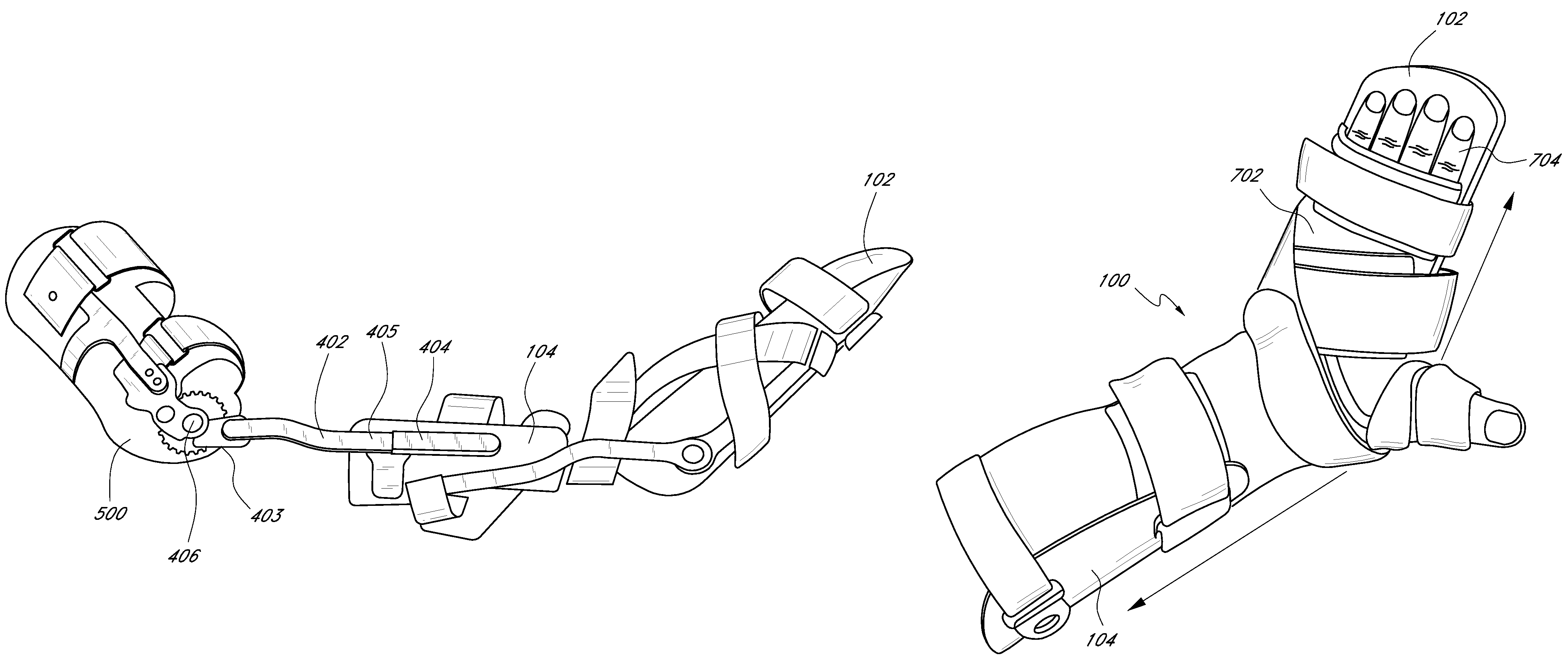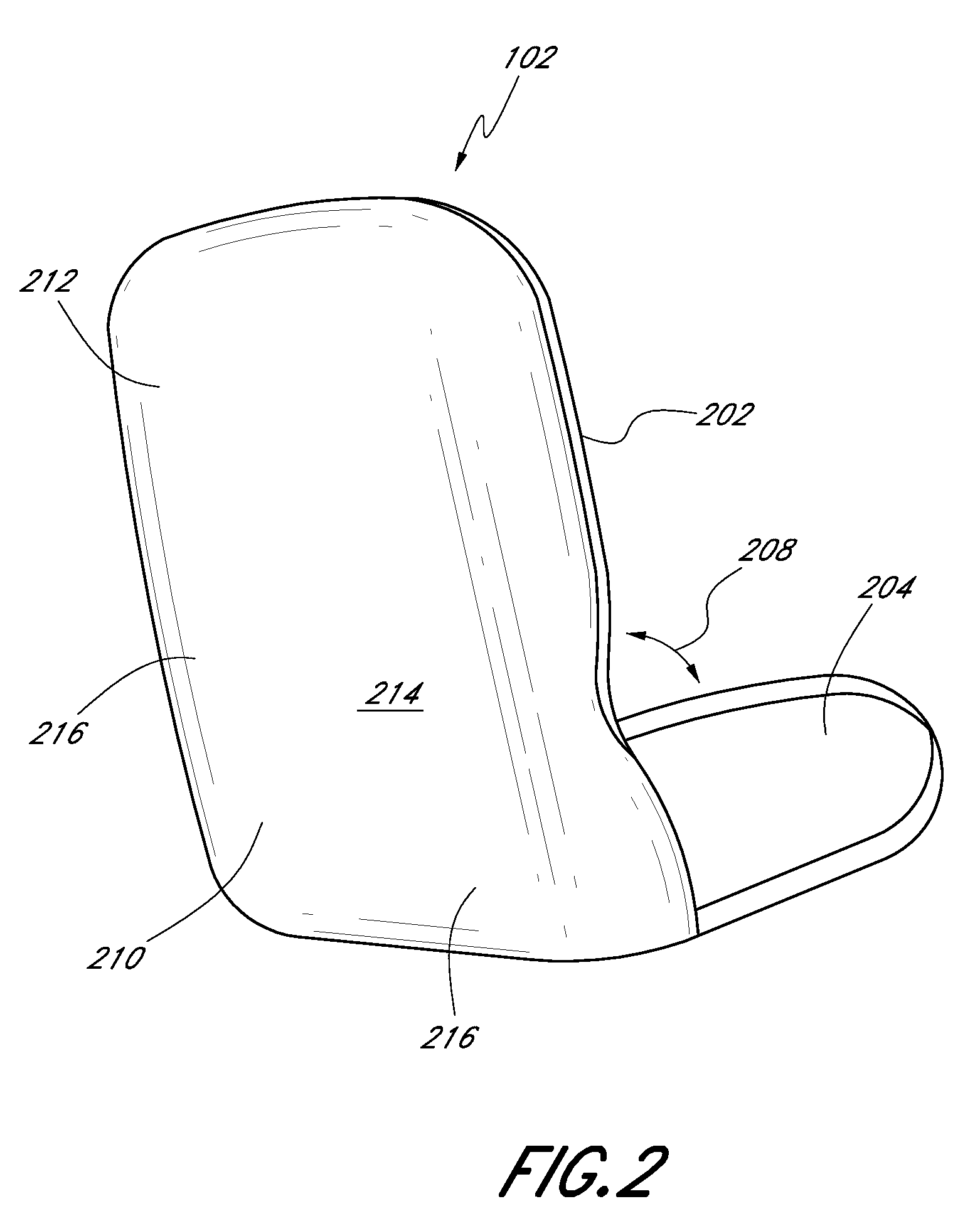Orthotic device
a technology of orthotics and devices, applied in the field of orthotics, can solve the problems of muscle spasticity, hypertonicity and contractures of patients with neurological disorders, and improper control of brain signals, and achieve the effect of reducing contracture and hypertonicity
- Summary
- Abstract
- Description
- Claims
- Application Information
AI Technical Summary
Benefits of technology
Problems solved by technology
Method used
Image
Examples
Embodiment Construction
[0019]FIG. 1 illustrates an orthotic device 100 of one preferred embodiment of the present invention. As shown in FIG. 1, the device 100 generally includes a hand support 102 and a forearm support 104 which are movably interconnected by a joint 106. Preferably, the hand support 102 and forearm support 104 are pivotable about a central axis 108 defined by the joint 106. In one embodiment, the joint 106 is a ratchet joint known in the art. The ratchet joint can be locked in a plurality of different positions so that the hand support 102 and forearm support 104 can be affixed at various angles relative to each other. In one embodiment, the angle between the hand support 102 and forearm support 104 can be set at about 180 degrees, 150 degrees, 130 degrees, 100 degrees, and 90 degrees. Additionally, the hand support 102 and forearm support 104 can be applied and secured to a patient's hand and forearm respectively by straps 110 or other attachment devices. As will be described in greater...
PUM
 Login to View More
Login to View More Abstract
Description
Claims
Application Information
 Login to View More
Login to View More - R&D
- Intellectual Property
- Life Sciences
- Materials
- Tech Scout
- Unparalleled Data Quality
- Higher Quality Content
- 60% Fewer Hallucinations
Browse by: Latest US Patents, China's latest patents, Technical Efficacy Thesaurus, Application Domain, Technology Topic, Popular Technical Reports.
© 2025 PatSnap. All rights reserved.Legal|Privacy policy|Modern Slavery Act Transparency Statement|Sitemap|About US| Contact US: help@patsnap.com



